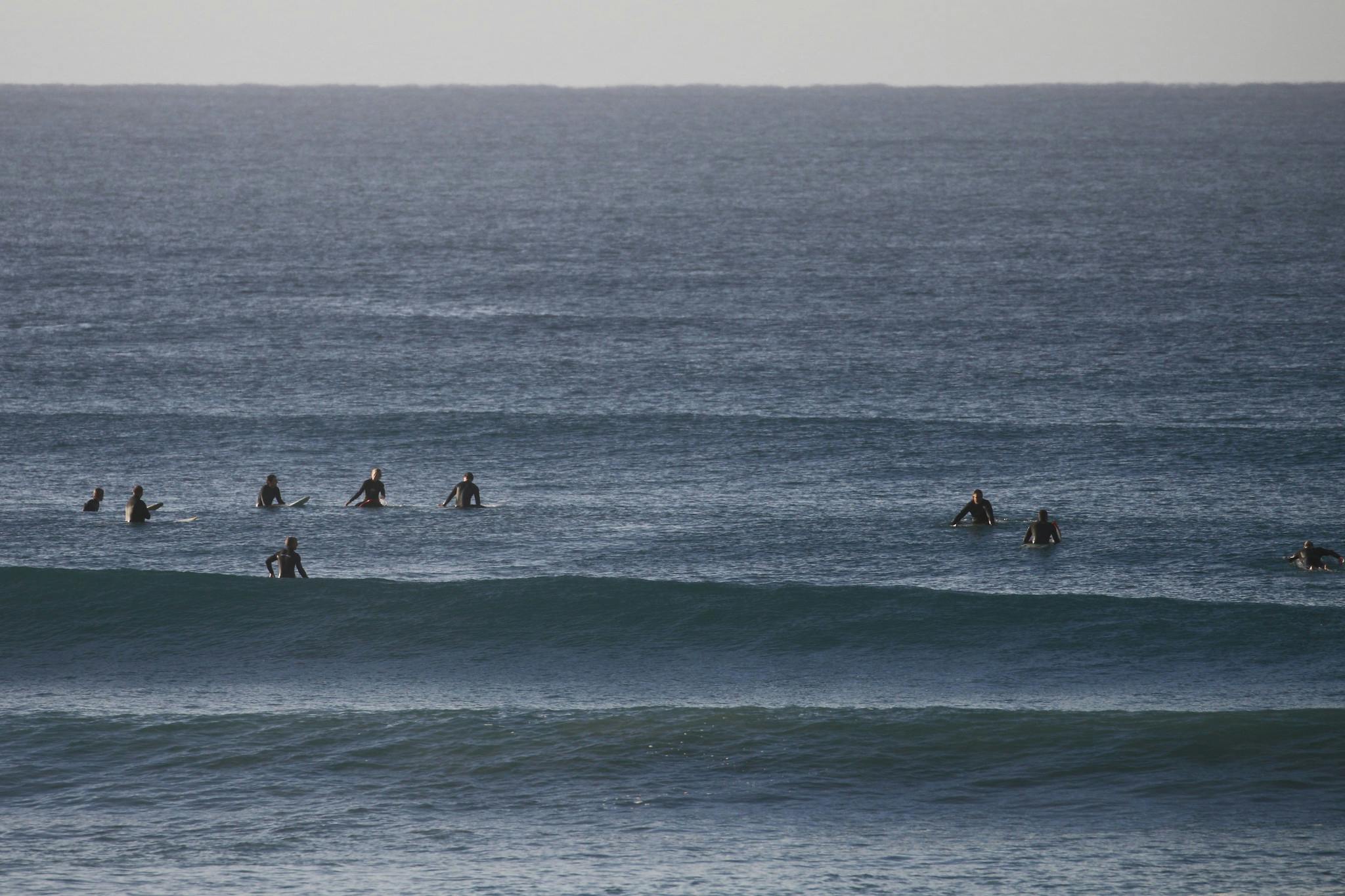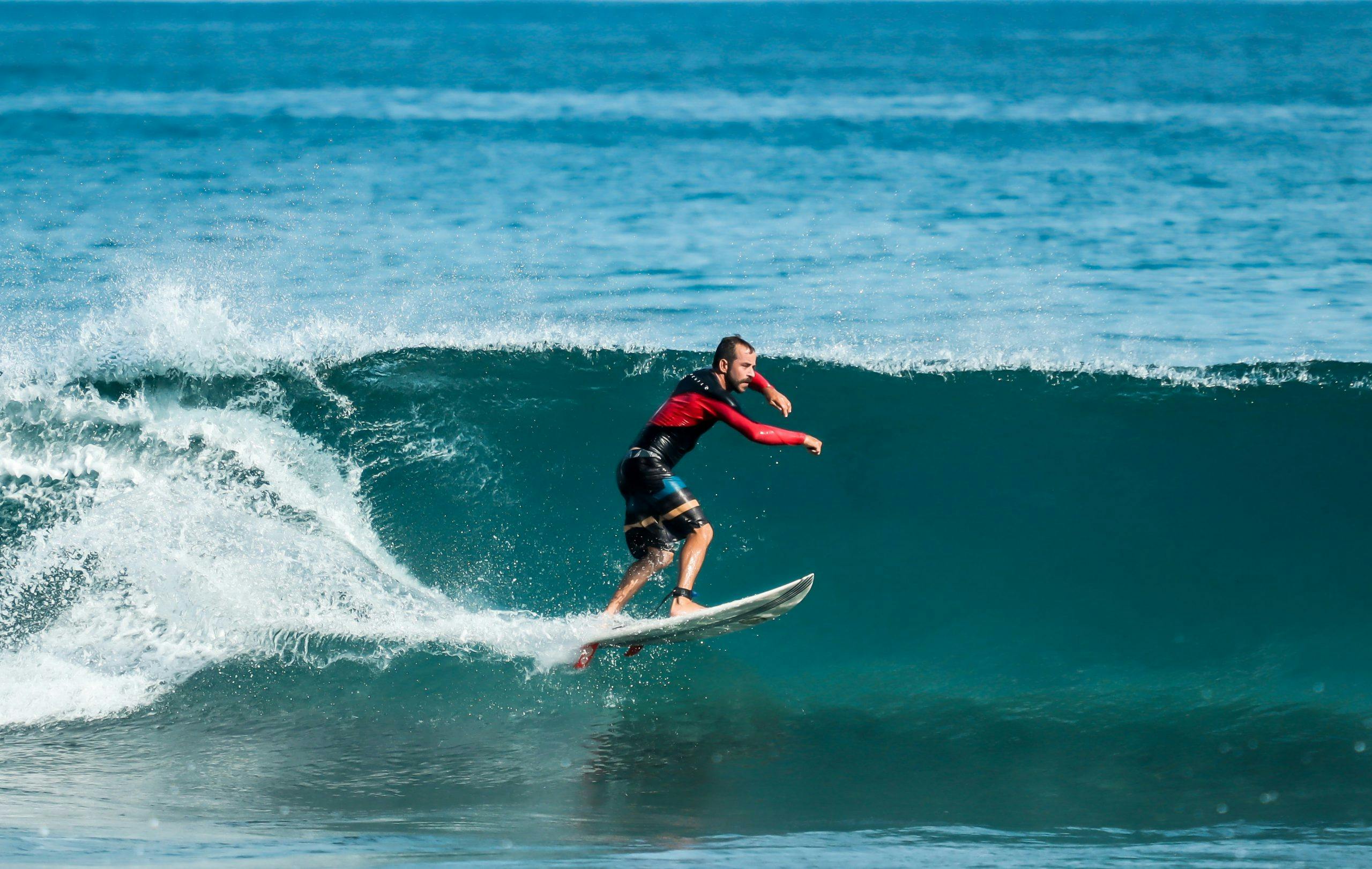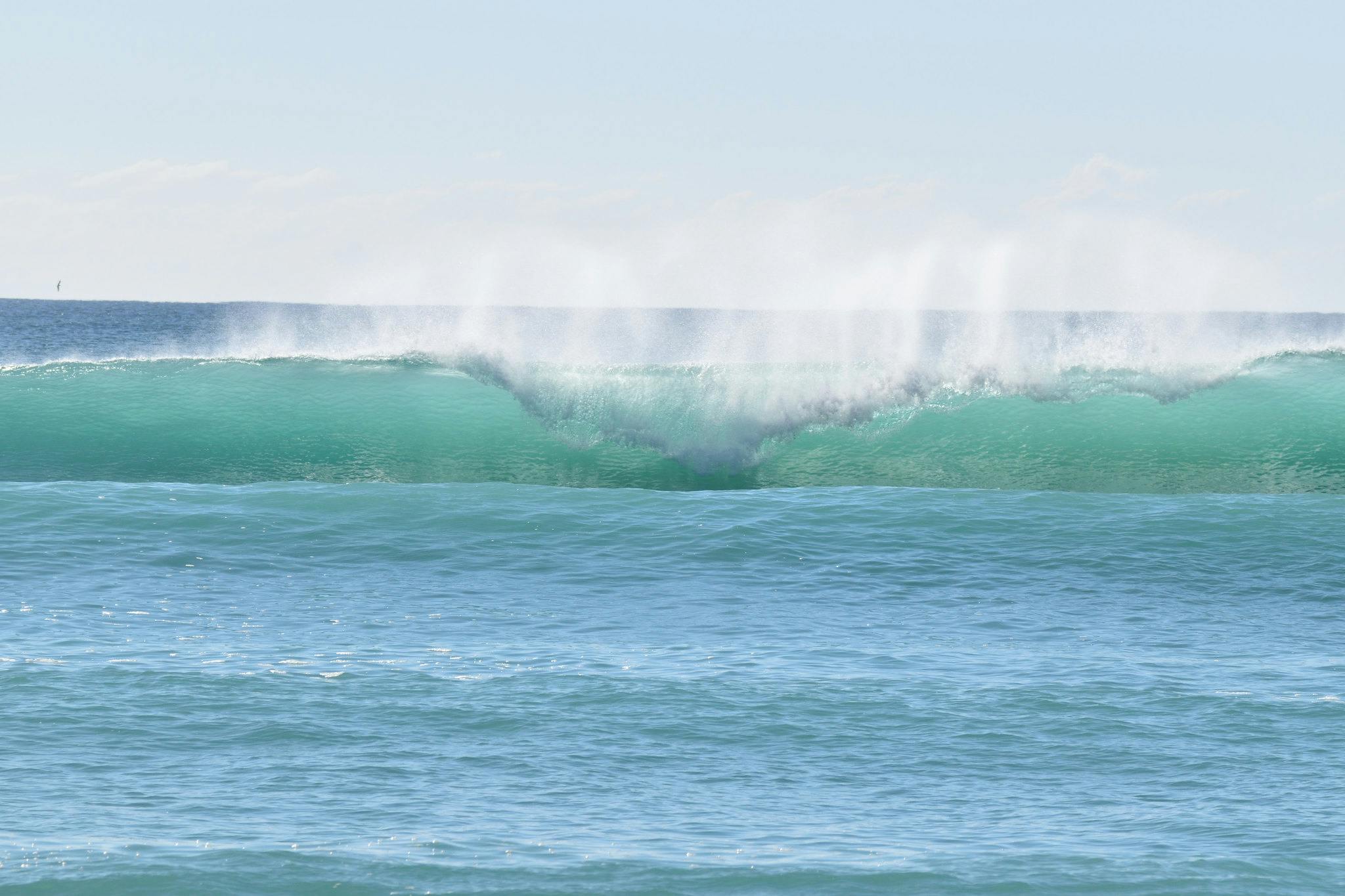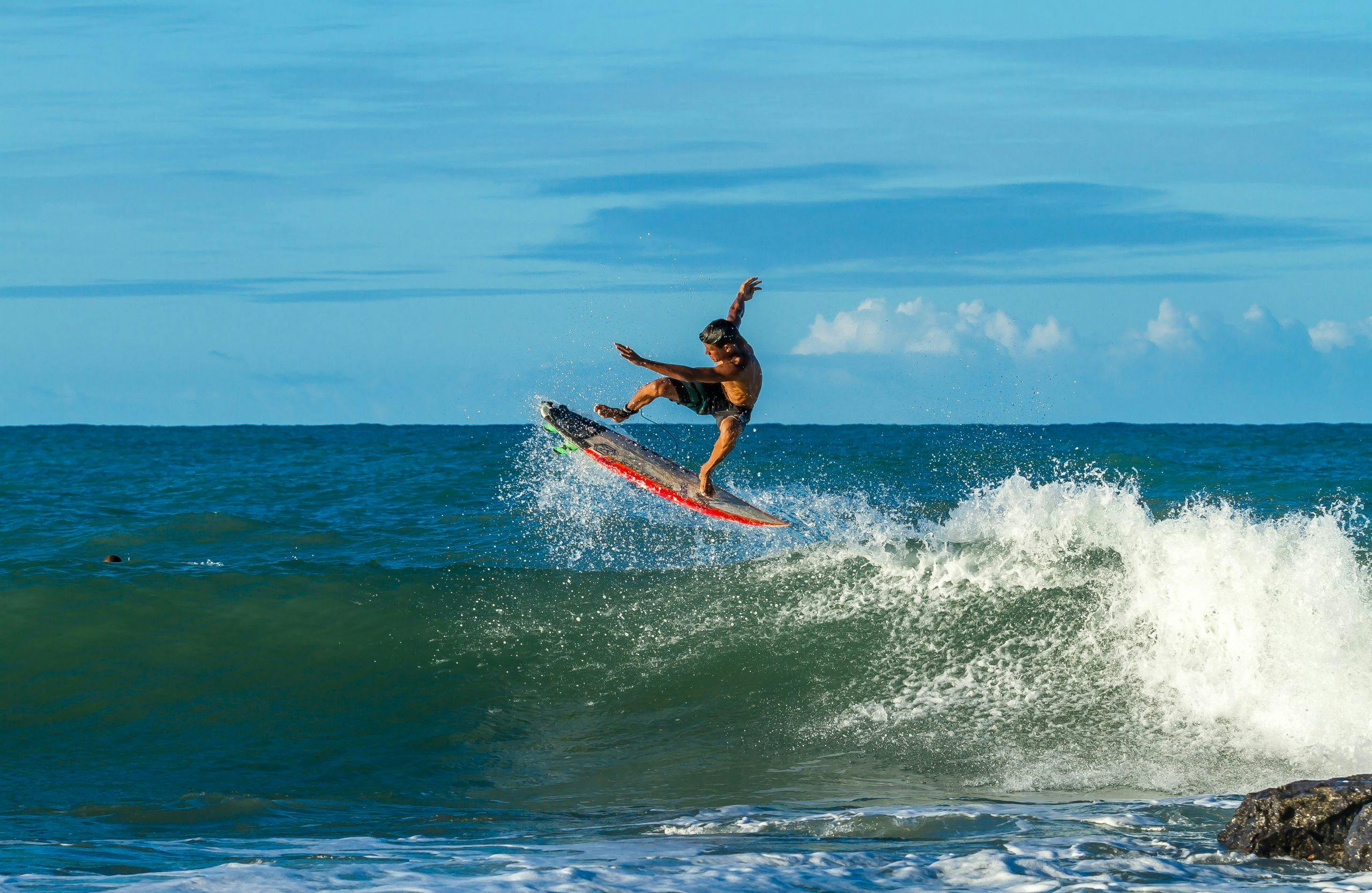What’s worse than frantically paddling to catch a wave, only to be rewarded with a short ride, or even worse, a wipeout? Sometimes, that’s the way the cookie crumbles… or should I say, that’s the way the wave breaks.
Waves break on their own terms with little regard for you and your board. But learning how to ‘read’ the waves can tell you which waves will reward you with the best rides.
Learning about how waves behave is a key skill for surfers of all skill levels. Surfing is all about timing and choosing the right waves. Anticipating what the waves will do can help you catch great rides on great waves. It will also help you avoid wasting your time with lousy rides on lousy waves.

One of the most important elements of a wave is the direction it breaks in.
The way a wave breaks is dictated by the direction of the wind, the water level, and the slope and features of the ocean floor. The highest part of the wave, also known as the peak, is where the wave will break. Waves usually break either to the left or to the right. Riding in the same direction the wave is breaking in will give you the best ride.
Whose wave is it anyway?
The direction the wave peels in determines who has the right of way. The surfer that is closest to the peak of the wave has priority over the wave. If there is a surfer beside your left shoulder and you are paddling for a right-breaking wave, you should give up the right of way. Sometimes, surfers will shout out “going right” or “going left” to prevent confusion and collisions.
What is a left break?
A left break is a wave that breaks to a surfer’s left. From the shore, this wave will look like it’s breaking from left to right. A surfer paddling to catch a left break must turn left to ride the wave.

What is a right break?
A right break is a wave that breaks to a surfer’s right. From the shore, this wave will look like it’s from right to left. A surfer paddling to catch a right break must turn right to ride the wave.

But wait! There’s more…
Waves can also break on both sides. This is called an A frame or a split peak. These waves have even angles on each side of the peak, which resemble an upside down ‘V’ or an ‘A’.
A frame waves are great. You can ride them on both the left and right side if you’re in the peak of the wave when it’s breaking. Two surfers can even ride the same A frame wave on either side.

If A frames are a surfer’s dream, closeouts are a surfer’s worst nightmare. This kind of wave line will be parallel to the skyline, and it breaks all at once, making it essentially unrideable in either direction.
By reading the waves and only catching good quality waves, you can make the most of your time in the water.
If you’re new to surfing, spend some time on the shore watching the waves, how and when they break, and how the surfers interact with them. You’ll probably learn a lot! Surfing takes a lot of energy and a lot of stamina, so you’ll want to make the waves you catch count.

